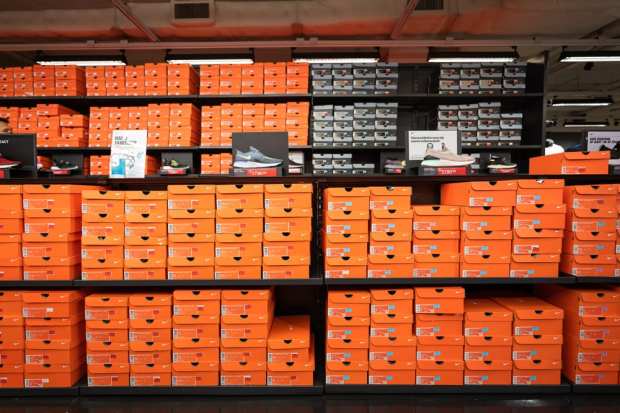Nike, Other Major Brands Report Millions In Bad Debt As Retailers Struggle To Pay Suppliers

The impact of COVID-19 on retailers is obvious as companies report plummeting sales, but the pandemic has also delivered a blow to the middlemen, which include makers of apparel and accessories, The Wall Street Journal reported.
Giant suppliers that include Columbia Sportswear Co., Nike and Samsonite International SA have disclosed millions of dollars in bad debt in their quarterly reports to the U.S. Securities and Exchange Commission (SEC).
Typically, retailers have 30 days to pay for products provided on credit. But since the pandemic, some retailers have delayed payment to suppliers in a bid to conserve cash. Others, such as J. Crew and JCPenney, have filed bankruptcy while others pay on time. That means suppliers must decide which stores are facing temporary hardships and which won’t pay their bills, noted the report.
Once a firm files for bankruptcy, vendors’ chances of getting paid diminish, noted David Swartz, an analyst covering apparel retailers and manufacturers at Morningstar Research Services LLC.
“There’s a reason why they take that charge,” he said. “It’s not something they take lightly.”
Columbia Sportswear reported a nearly $20 million bad debt charge, which is the biggest in its history, during the first quarter. “We’re making those types of reserves, which are pretty darn extraordinary, given the sheer amount of uncertainty there is in the marketplace at this point,” CFO Jim Swanson said.
Nike disclosed a bad debt charge of $178 million for the period that ended May 31. “It’s definitely reflective of an expectation that a lot of the smaller regional or mom-and-pop stores aren’t going to make it,” Camilo Lyon, an analyst who covers Nike at the investment firm BTIG LLC, told the newspaper.
On Wednesday (July 15), PYMNTS reported that as many as 30 percent of surveyed Main Street SMBs that are struggling to maintain cash flows say their troubles are solely the result of the pandemic, while 54 percent say the pandemic is partially to blame. This has left many unsure of whether they will be able to stay open until their foot traffic returns.
A second PYMNTS report found that as retailers’ recovery continues on an uncertain path, the upstream ordering challenge will negatively impact suppliers as the panic makes a comeback.
